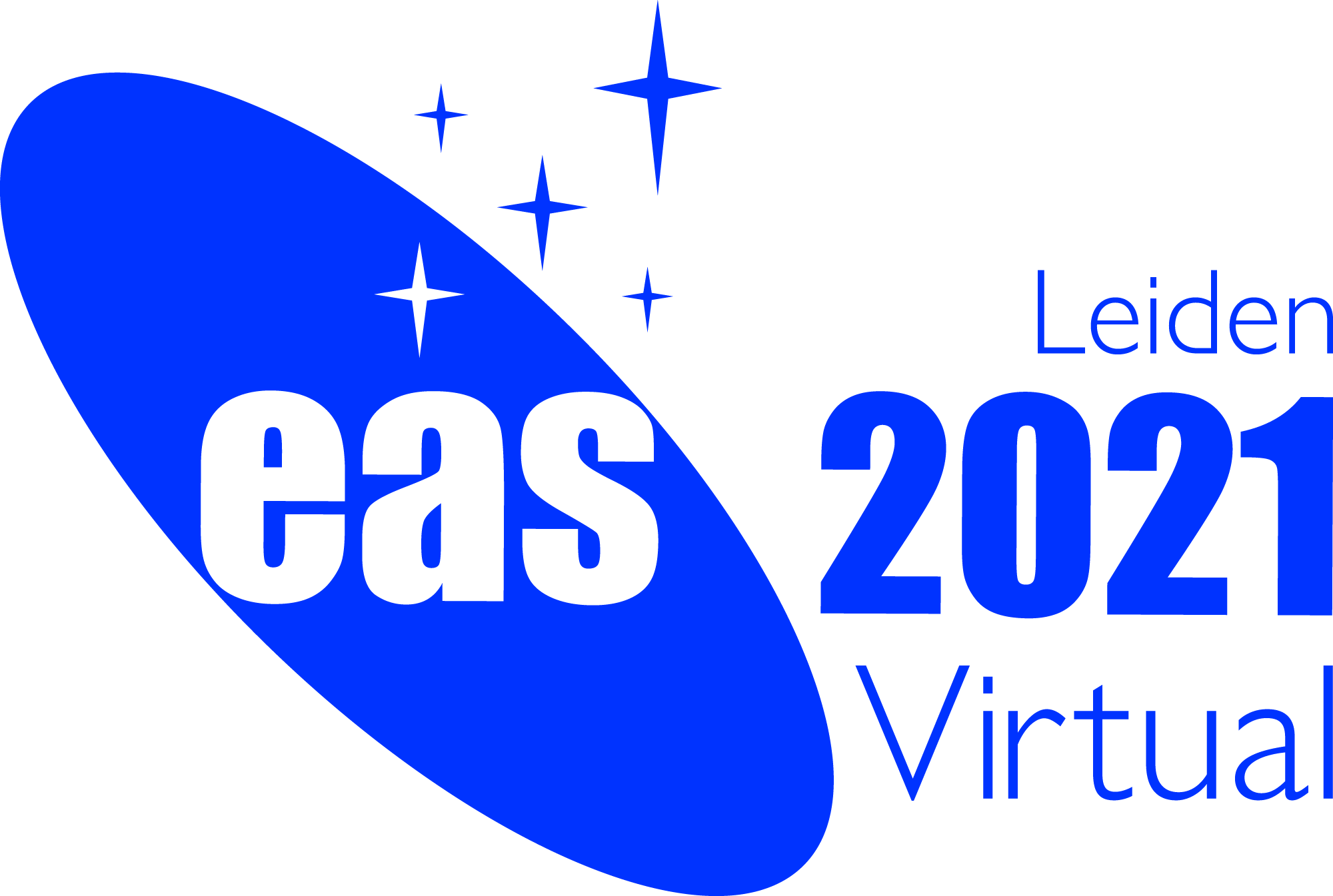Special Session SS12
2 July 2021
Gamma-ray bursts as cosmic probes: The next 10 years

Aims and scope
The goal of this special session is to bring together all active, European-based researchers in the field of gamma-ray bursts (GRBs) as tools to probe galaxies and the high-redshift universe. The focus will be on recent developments and on the future prospect of the field in the next 10 years.
Long-duration GRBs (LGRBs) have been shown to be powerful tracers of the dust, metals and molecules in the interstellar medium of high-redshift galaxies, the gas content of the intergalactic medium and the overall cosmic star formation history of the universe. Due to their immense brightness, they allow all these vital ingredients of galaxy formation and evolution to be studied all the way out to the epoch of reionization. In particular, the recent, significant contributions given by large collaborations to the observations of LGRBs within the last few years, have provided a unique sample from which these topics can be investigated, covering redshifts from the very nearby universe out to z~8.
In this session, we will facilitate presentations providing overviews of the current status of the field. One part will be dedicated to the current understanding of the galaxies hosting LGRBs, focusing on detailed measurements of their interstellar medium and how they globally compare to the underlying field galaxy population. A second part will focus on using GRBs as tools to study the overall evolution of the Universe, i.e. reionization, the cosmic star formation history, the metal enrichment of galaxies through cosmic time and the neutral gas content of the intergalactic medium.
The last block of this session is dedicated to short presentations on future missions and instrumentation related to the observations and follow-up of GRBs. Furthermore, it will include discussions in plenum of the future of the GRB field. We invite interested parties to consider the following open questions, on which the discussion will be based:
- How do we obtain observations on faster time-scales to probe the very early phase of the afterglow?
- How do we optimise the search for the highest redshift GRBs?
- What can we do to better study the elusive, optically "dark" bursts (using ALMA, ELT, or something else)?
- Do we have to rely more on polarimetry, or observations at other wavelengths (including multimessenger astronomy) to advance the use of GRBs as cosmic probes?
- How should the future data access policies and legacy databases be structured to optimize the science yield?
In this special session we hope to address and converge on possible solution for most of these questions.
Programme
- GRB host galaxies
- Probing the epoch of reionization with GRBs
- The cosmic star formation history
- The neutral gas content of the high-redshift ISM
- Planned facilities in the next 10 years
...
Invited speakers
Nial R. Tanvir (review on probing the epoch of reionization with GRBs)
Daniel A. Perley (review on GRB host galaxies)
Scientific organisers
Kasper E. Heintz (chair, Univ. Iceland), Giovanna Pugliese (co-chair, Univ. Amsterdam), Darach Watson (DAWN/NBI), Lex Kaper (Univ. Amsterdam), Daniele B. Malesani (DTUspace), Susanna Vergani (CNRS, Paris Obs.), Johan P. U. Fynbo (DAWN/NBI), Valerio D'Elia (ASI-SSDC), Christina Thöne (HETH/IAA-CSIC), Antonio de Ugarte Postigo (HETH/IAA-CSIC, DARK/NBI), Annalisa De Cia (U. Geneva), Luca Izzo (DARK/NBI), Lise Christensen (DARK/NBI)
Contact
Kasper E. Heintz, session chair:
keh14 @ hi.is
Giovanna Pugliese, co-chair:
pugliese @ astroduo.org
Updated on Fri Jan 29 14:46:43 CET 2021
|

 A power cut will shut down all EAS services on Tuesday, 10 January 2017 starting at 7:30 CET.
A power cut will shut down all EAS services on Tuesday, 10 January 2017 starting at 7:30 CET.


